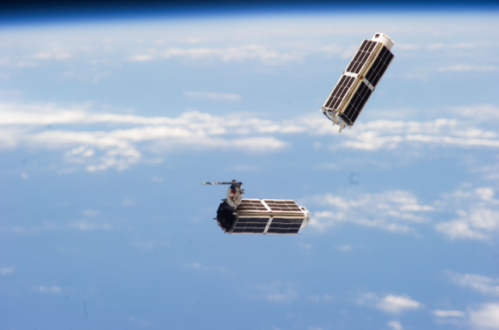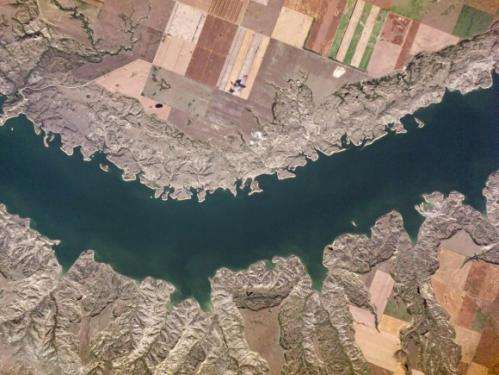Antares rocket failure pushes tiny satellite company to hitch ride with SpaceX

The various companies that had stuff sitting on the failed Orbital Sciences Antares rocket launch last month are busy looking for alternatives. One example is Planet Labs, which is best known for deploying dozens of tiny satellites from the International Space Station this year.
The company lost 26 satellites in the explosion. But within nine days of the Oct. 28 event, Planet Labs had a partial backup plan—send two replacements last-minute on an upcoming SpaceX Falcon 9 launch.
In what Planet Labs' Robbie Schlinger calls "the future of aerospace", almost immediately after the explosion Planet Labs began working with NanoRacks, which launches its satellites from the space station, to find a replacement flight. Half of Planet Labs' employees began building satellites, while the other half began working through the regulations and logistics. They managed to squeeze two satellites last-minute on to the next SpaceX manifest, which is scheduled to launch in December.
"In space, each element is very difficult to get right by itself, and it takes an ecosystem to deliver a capability this quickly," wrote Schlinger, a president and co-founder of the company, in a blog post last week.
"Central to making this possible was developing our own custom design of the satellite that is free from specialty suppliers (thus decreasing lead time) and having a spacecraft design optimized for manufacturing and automated testing. Moreover, we certainly couldn't have done it without the collaboration from NanoRacks and support from NASA, and we thank them for their support. This is a great example for how to create a resilient aerospace ecosystem."
There's no word on how they will replace the other satellites, nor how this will affect Planet Labs' vision (explained in this March TED talk) to have these small sentinels frequently circling Earth to provide near-realtime information on what is happening with our planet. But the company acknowledged that space is hard and satellites do get lost from time to time.
The company has been testing hardware in space, Silicon Valley-style, and starting to sign partnerships with various entities who want access to the imagery. Check out some of the free stuff below.
-

NanoRacks CubeSats deployed from the International Space Station in February 2014, during Expedition 38. Credit: NASA -

Writes Planet Labs of this image: “The deep valleys and sharp ridges of the Nan Shan range in central China are highlighted in this early-morning satellite image.” Credit: Planet Labs -

Writes Planet Labs of this image: “Filled in 1967, Lake Diefenbaker is a 140-mile-long reservoir along the South Saskatchewan and Qu’Appelle Rivers. Diefenbaker is renowned for harboring extremely large fish: the world record rainbow trout (48 pounds) and burbot (25 pounds) were both caught in the lake.” Credit: Planet Labs
Source: Universe Today



















